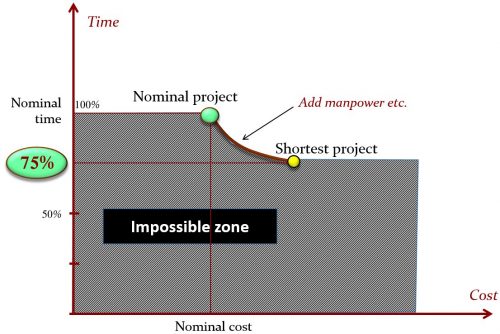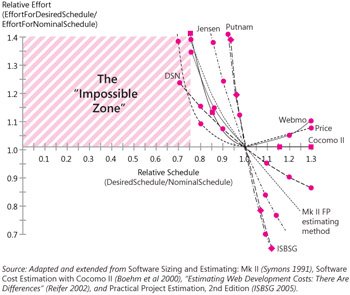Recently I had a need to collect my education-related publications, so I went through my publication list and extracted items devoted to issues of learning computer science (informatics) and software engineering. There turned out to be far more than I expected; I did not think of myself as primarily an education researcher but it seems I am that too. (Not so many research computer scientists take the trouble to publish in SIGCSE, ITiCSE and other top CS education venues.)
Without presuming that the list will be of interest I am reproducing it below for the record. All comes from my publication list here, which contains more information, in particular a descriptive paragraph or two for every single publication.
I have also included PhD theses in education. (Whole list of PhD theses supervised here.)
The topics include among others, in approximate chronological order (although the list below is in the reverse order):
- Early experience teaching modern programming concepts in both industry and universities.
- In the nineties, I was full time at Eiffel Software, the development of a general framework for teaching programming. This was written from the safe position of someone in industry advising academic colleagues on what to do (usually the advice goes the other way). I did have, however, the opportunity to practice my preaching in short stints at University of Technology, Sydney and particularly Monash University. The concept of the Inverted Curriculum (also known as “ Outside-In”) date back to that period, with objects first (actually classes) and contracts first too.
- When I joined ETH, a general paper on the fundamental goals and concepts of software engineering education, “Software Engineering in the Academy”, published in IEEE Computer.
- At ETH, putting the Inverted Curriculum in practice, with 14 consecutive sessions of the introductory programming courses for all computer science students, resulting in the Touch of Class textbook and a number of papers coming out of our observations. An estimated 6000 students took the course. A variant of it has also been given several times at Innopolis University.
- A theory of how to structure knowledge for educational purposes, leading to the notion of “Truc” (Teachable, Reusable Unit of Cognition).
- The development by Michela Pedroni of the Trucstudio environment, similar in its form to an IDE but devoted, instead of the development of programs, to the visual development of courses, textbooks, curricula etc.
- Empirical work by Marie-Hélène Ng Cheong Vee (Nienaltowski) and Michela Pedroni on what beginners understand easily, and not, for example according to the phrasing of compiler error messages.
- Other empirical work, by Michela Pedroni and Manuel Oriol, on the prior knowledge of entering computer science students.
- The DOSE course (Distributed and Outsourced Software Engineering) ran for several years a student project done by joint student teams from several cooperating universities, including Politecnico di Milano which played a key role along with us. It enabled many empirical studies on the effect on software development of having geographically distributed teams. People who played a major role in this effort are, at ETH, Martin Nordio, Julian Tschannen and Christian Estler and, at Politecnico, Elisabetta di Nitto, Giordano Tamburrelli and Carlo Ghezzi.
- Several MOOCs, among the first at ETH, on introductory computing and agile methods. They do not appear below because they are not available at the moment on the EdX site (I do not know why and will try to get them reinstated). The key force there was Marco Piccioni. MOOCs are interesting for many reasons; they are a substitute neither for face-to-face teaching nor for textbooks, but an interesting complement offering novel educational possibilities. Thanks to codeboard, see below, our programming MOOCs provide the opportunity to compile and run program directly from the course exercise pages, compare the run’s result to correct answers for prepared tests, and get immediate feedback .
- A comparative study of teaching effectiveness of two concurrency models, Eiffel SCOOP and JavaThreads (Sebastian Nanz, Michela Pedroni).
- The development of the EiffelMedia multimedia library at ETH, which served as a basis for dozens of student projects over many years. Credit for both the idea and its realization, including student supervision, goes to Till Bay and Michela Pedroni.
- The development (Christian Estler with Martin Nordio) of the Codeboard system and site, an advanced system for cloud support to teach programming, enabling students to compile, correct and run programs on the web, with support for various languages. Codeboard is used in the programming MOOCs.
- A hint system (Paolo Antonucci, Michela Pedroni) to help students get progressive help, as in video games, when they stumble trying to write a program, e.g. with Codeboard.
Supervised PhD theses on education
The following three theses are devoted to educational topics (although many of the other theses have educational aspects too):
Christian Estler, 2014, Understanding and Improving Collaboration in Distributed Software Development, available here.
Michela Pedroni, 2009, Concepts and Tools for Teaching Programming, available here.
Markus Brändle, 2006: GraphBench: Exploring the Limits of Complexity with Educational Software, available here. (The main supervisor in this case was Jürg Nievergelt.)
MOOCs (Massive Online Open Courses)
Internal MOOCs, and three courses on EdX (links will be added when available):
- Computing: Art, Magic, Science? Part 1 (CAMS 1), 2013.
- Computing: Art, Magic, Science? Part 1 (CAMS 2), 2014.
- Agile Software Development, 2015.
Publications about education
1. Paolo Antonucci, Christian Estler, Durica Nikolic, Marco Piccioni and Bertrand Meyer: An Incremental Hint System For Automated Programming Assignments, in ITiCSE ’15, Proceedings of 2015 ACM Conference on Innovation and Technology in Computer Science Education, 6-8 July 2015, Vilnius, ACM Press, pages 320-325. (The result of a master’s thesis, a system for helping students solve online exercises, through successive hints.) Available here.
2. Jiwon Shin, Andrey Rusakov and Bertrand Meyer: Concurrent Software Engineering and Robotics Education, in 37th International Conference on Software Engineering (ICSE 2015), Florence, May 2015, IEEE Press, pages 370-379. (Describes our innovative Robotics Programming Laboratory course, where students from 3 departments, CS, Mechanical Engineering and Electrical Engineering learned how to program robots.) Available here.
3. Cristina Pereira, Hannes Werthner, Enrico Nardelli and Bertrand Meyer: Informatics Education in Europe: Institutions, Degrees, Students, Positions, Salaries — Key Data 2008-2013, Informatics Europe report, October 2014. (Not a scientific publication but a report. I also collaborated in several other editions of this yearly report series, which I started, from 2011 on. A unique source of information about the state of CS education in Europe.) Available here.
4. (One of the authors of) Informatics education: Europe cannot afford to miss the boat, edited by Walter Gander, joint Informatics Europe and ACM Europe report, April 2013. An influential report which was instrumental in the introduction of computer science in high schools and primary schools in Europe, particularly Switzerland. Emphasized the distinction between “digital literacy” and computer science. Available here.
5. Sebastian Nanz, Faraz Torshizi, Michela Pedroni and Bertrand Meyer: Design of an Empirical Study for Comparing the Usability of Concurrent Programming Languages, in Information and Software Technology Journal Elsevier, volume 55, 2013. (Journal version of conference paper listed next.) Available here.
6. Bertrand Meyer: Knowledgeable beginners, in Communications of the ACM, vol. 55, no. 3, March 2012, pages 10-11. (About a survey of prior knowledge of entering ETH CS students, over many years. Material from tech report below.) Available here.
7. Sebastian Nanz, Faraz Torshizi, Michela Pedroni and Bertrand Meyer: Design of an Empirical Study for Comparing the Usability of Concurrent Programming Languages, in ESEM 2011 (ACM/IEEE International Symposium on Empirical Software Engineering and Measurement), 22-23 September 2011 (best paper award). Reports on a carefully designed empirical study to assess the teachability of various approaches to concurrent programming. Available here.
8. Martin Nordio, H.-Christian Estler, Julian Tschannen, Carlo Ghezzi, Elisabetta Di Nitto and Bertrand Meyer: How do Distribution and Time Zones affect Software Development? A Case Study on Communication, in Proceedings of the 6th International Conference on Global Software Engineering (ICGSE), IEEE Computer Press, 2011, pages 176-184. (A study of the results of our DOSE distributed course, which involved students from different universities in different countries collaborating on a common software development project.) Available here.
9. Martin Nordio, Carlo Ghezzi, Elisabetta Di Nitto, Giordano Tamburrelli, Julian Tschannen, Nazareno Aguirre, Vidya Kulkarni and Bertrand Meyer: Teaching Software Engineering using Globally Distributed Projects: the DOSE course, in Collaborative Teaching of Globally Distributed Software Development – Community Building Workshop (CTGDSD), Hawaii (at ICSE), May 2011. (Part of the experience of our Distributed Outsourced Software Engineering course, taught over many years with colleagues from Politecnico di Milano and elsewhere, see paper in previous entry.) Available here.
10. Bertrand Meyer: From Programming to Software Engineering (slides only), material for education keynote at International Conference on Software Engineering (ICSE 2010), Cape Town, South Africa, May 2010. Available here.
11. Michela Pedroni and Bertrand Meyer: Object-Oriented Modeling of Object-Oriented Concepts, in ISSEP 2010, Fourth International Conference on Informatics in Secondary Schools, Zurich, January 2010, eds. J. Hromkovic, R. Královic, J. Vahrenhold, Lecture Notes in Computer Science 5941, Springer, 2010. Available here.
12. Michela Pedroni, Manuel Oriol and Bertrand Meyer: What Do Beginning CS Majors Know?, ETH Technical Report, 2009. (Unpublished report about the background of 1st-year ETH CS students surveyed over many years. See shorter 2012 CACM version above.) Available here.
13. Bertrand Meyer: Touch of Class: Learning to Program Well Using Object Technology and Design by Contract, Springer, 2009 (also translated into Russian). (Introductory programming textbook, used for many years at ETH Zurich and Innopolis University for the first programming course. The herecontains a long discussion of pedagogical issues of teaching programming and CS.) Book page and text of several chapters here.
14. Michela Pedroni, Manuel Oriol, Lukas Angerer and Bertrand Meyer: Automatic Extraction of Notions from Course Material, in Proceedings of SIGCSE 2008 (39th Technical Symposium on Computer Science Education), Portland (Oregon), 12-15 March 2008, ACM SIGCSE Bulletin, vol. 40, no. 1, ACM Press, 2008, pages 251-255. (As the title indicates, tools for automatic analysis of course material to extract the key pedagogical notions or “Trucs”.) Available here.
15. Marie-Hélène Nienaltowski, Michela Pedroni and Bertrand Meyer: Compiler Error Messages: What Can Help Novices?, in Proceedings of SIGCSE 2008 (39th Technical Symposium on Computer Science Education), Portland (Oregon), Texas, 12-15 March 2008, ACM SIGCSE Bulletin, vol. 40, no. 1, ACM Press, 2008, pages 168-172. (Discusses the results of experiments with different styles of compiler error messages, which can be baffling to beginners, to determine what works best.) Available here.
16. Bertrand Meyer and Marco Piccioni: The Allure and Risks of a Deployable Software Engineering Project: Experiences with Both Local and Distributed Development, in Proceedings of IEEE Conference on Software Engineering & Training (CSEE&T), Charleston (South Carolina), 14-17 April 2008, ed. H. Saiedian, pages 3-16. (Paper associated with a keynote at an SE education conference. See other papers on the DOSE distributed project experience below.) Available here.
17. Till Bay, Michela Pedroni and Bertrand Meyer: By students, for students: a production-quality multimedia library and its application to game-based teaching, in JOT (Journal of Object Technology), vol. 7, no. 1, pages 147-159, January 2008. Available here (PDF) and here (HTML).
18. Marie-Hélène Ng Cheong Vee (Marie-Hélène Nienaltowski), Keith L. Mannock and Bertrand Meyer: Empirical study of novice error paths, Proceedings of workshop on educational data mining at the 8th international conference on intelligent tutoring systems (ITS 2006), 2006, pages 13-20. (An empirical study of the kind of programming mistakes learners make.) Available here.
19. Bertrand Meyer: Testable, Reusable Units of Cognition, in Computer (IEEE), vol. 39, no. 4, April 2006, pages 20-24. (Introduced a general approach for structuring knowledge for teaching purposes: “Trucs”. Served as the basis for some other work listed, in particular papers with Michela Pedroni on the topics of her PhD thesis. Available here.
21. Michela Pedroni and Bertrand Meyer: The Inverted Curriculum in Practice, in Proceedings of SIGCSE 2006, Houston (Texas), 1-5 March 2006, ACM Press, 2006, pages 481-485. (Develops the idea of inverted curriculum which served as the basis for our teaching of programming at ETH, Innopolis etc. and led to the “Touch of Class” textbook.) Available here.
22. Bertrand Meyer: The Outside-In Method of Teaching Introductory Programming, in Perspective of System Informatics, Proceedings of fifth Andrei Ershov Memorial Conference, Akademgorodok, Novosibirsk, 9-12 July 2003, eds. Manfred Broy and Alexandr Zamulin, Lecture Notes in Computer Science 2890, Springer, 2003, pages 66-78. (An early version of the ideas presented in the previous entry.) Available here.
23. Bertrand Meyer: Software Engineering in the Academy, in Computer (IEEE), vol. 34, no. 5, May 2001, pages 28-35. Translations: Russian in Otkrytye Systemy (Open Systems Publications), #07-08-2001, October 2001. (A general discussion of the fundamental concepts to be taught in software engineering. Served as a blueprint for my teaching at ETH.) Available here.
24. Bertrand Meyer: Object-Oriented Software Construction, second edition, Prentice Hall, 1296 pages, January 1997. Translations: Spanish, French Russian, Serbian, Japanese. (Not a publication on education per se but cited here since it is a textbook that has been widely used for teaching and has many comments on pedagogy.)
23. Bertrand Meyer: The Choice for Introductory Software Education, Guest editorial in Journal of Object-Oriented Programming, vol. 7, no. 3, June 1994, page 8. (A discussion of the use of Eiffel for teaching software engineering topics.)
25. Bertrand Meyer, Towards an Object-Oriented Curriculum, in Journal of Object-Oriented Programming, vo. 6, number 2, May 1993, pages 76-81. (Journal version of paper cited next.) Available here.
26. Bertrand Meyer: Towards an Object-Oriented Curriculum, in TOOLS 11, Technology of Object-Oriented Languages and Systems, Santa Barbara, August 1993, eds. Raimund Ege, Madhu Singh and B. Meyer, Prentice Hall 1993, pages 585-594. (Early advocacy for using OO techniques in teaching programming – while I was not in academia. Much of my subsequent educational work relied on those ideas.) Available here.
27. Bertrand Meyer: Object-Oriented Software Construction, Prentice Hall, 592 pages, 1988. (First edition, translated into German, Italian, French, Dutch, Romanian, Chinese. As noted for second edition above, not about education per se, but widely used textbook with pedagogical implications.)
28. Initiation à la programmation en milieu industriel (Teaching Modern Programming Methodology in an Industrial Environment), in RAIRO, série bleue (informatique), vol. 11, no. 1, pages 21-34 1977. (Early paper on teaching advanced programming techniques in industry.) Available here.
29. Claude Kaiser, Bertrand Meyer and Etienne Pichat, L’Enseignement de la Programmation à l’IIE (Teaching Programming at the IIE engineering school), in Zéro-Un Informatique, 1977. (A paper on my first teaching experience barely out of school myself.) Available here.



